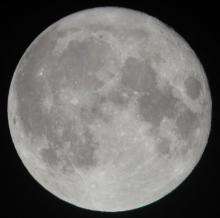Moon's shadow, like a ship, creates waves

During a solar eclipse, the Moon's passage overhead blocks out the majority of the Sun's light and casts a wide swath of the Earth into darkness. The land under the Moon's shadow receives less incoming energy than the surrounding regions, causing it to cool.
In the early 1970s, researches proposed that this temperature difference could set off slow-moving waves in the upper atmosphere. They hypothesized that the waves, moving more slowly than the travelling temperature disparity from which they spawned, would pile up along the leading edge of the Moon's path -- like slow-moving waves breaking on a ship's bow. The dynamic was shown theoretically and in early computer simulations, but it was not until a total solar eclipse on 22 July 2009 that researchers were able to observe the behavior.
Using a dense network of ground-based global positioning satellite receivers, Liu et al. tracked the influence of the 2009 eclipse as it passed over Taiwan and Japan. The researchers looked for changes in the total electron content in the ionosphere and find acoustic waves with periods between 3 and 5 minutes traveling around 100 meters per second (328 feet per second) that originated from the leading and trailing edges of the shadow, analogous to bow waves and stern wake common in maritime activity.
They find that there was a 30 minute time difference between the arrival of the bow and stern waves suggesting that, were the Moon's shadow a ship, it would be 1,712 kilometers (1,064 miles) long. The researchers indicate that this would correspond to the part of the Moon's shadow that produced at least an 80 percent obscuration of the Sun's light.
More information: Geophysical Research Letters, doi:10.1029/2011GL048805 , 2011
Provided by American Geophysical Union




















